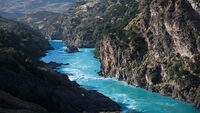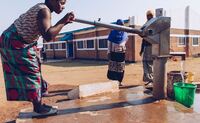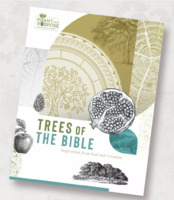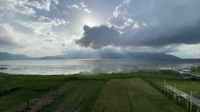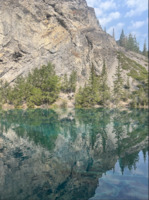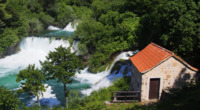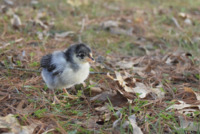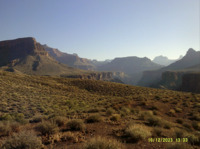Search
100 items
-
Should Rivers Have Right? A Growing Movement Says It’s About Time
“Should Rivers Have Rights?," published through the Yale School of Environment, addresses not only the growing impact of river degradation but also the spiritual connection that indigenous cultures have with river systems around the world. Attributing legal rights to rivers and other bodies of water will contribute to their protection from further human pollution as well as restoration of these natural areas. Through legal policy, rivers can be brought back to a safe state of equilibrium while also being preserved for indigenous groups. -
American Jewish World Service- Land, Water, and Climate Justice: Story Collection
The American Jewish World Service compiled a website of their outreach stories from the US, Africa, Asia, Latin America, and the Caribbean. Reflections from work with Indigenous communities are included as well. The environmental activism showcased on their website also defend women and their crucial involvement with agriculture and the environment. From the website;
"We aid communities and movements organizing to protect the land, water and natural resources that people depend on for their survival".
More information on how to get involved is listed on their website. -
Quench Their Thirst
"Welcome to the Quench Their Thirst Fundraising Project!
Water is a basic necessity of life, yet millions of people around the world lack access to this essential resource. By setting up a fundraising page, you can make a difference and help quench the thirst of those who need it most.
The money you raise will build water wells, boreholes and water filtration plants in rural communities in Africa and Asia, where people currently have no choice but to walk for miles to collect dirty, contaminated water. This not only puts their health at risk, but also takes up valuable time that could be spent on education, work, or caring for family members." -
Saving India’s Rivers: Ecology, Civil Society, Religion, and Legal Personhood
"Abstract: In recent decades, India’s environment has been severely compromised by riverine pollution combined with large-scale dams and exacerbated by diversion for irrigation. Most prominent among the rivers so affected has been the Ganges and its tributaries in northern India, which for Hindus include the country’s most sacred bodies of water. This paper examines three campaigns opposing dam construction, arguably the most widely publicized and analyzed efforts of this kind since independence in 1947. One campaign was essentially secular with virtually no religious component, the second mostly secular with some religious support, and the third almost totally a religious initiative. In the end, only the third attained any real success, and that rested on circumstances unlikely to be replicated. The possibility that future campaigns of this scale can be taken up again appears remote. Meanwhile, riverine pollution has continued to increase everywhere despite massive governmental programs to reduce it. Theoretically, it would seem that environmentalists and Hindu devotees with their veneration of nature should be able to work in common cause to reduce pollution, but any large-scale cooperation seems unlikely between these two disparate realms. More recently an effort to protect rivers by endowing them with legal personhood enjoyed an initial success, holding the promise that lawsuits could be brought on behalf of a river against those polluting it. The paper concludes that while the legal personhood strategy is currently stalled, it offers the best chance for eventual success in attenuating riverine pollution. In the course of the paper, a comparative theoretical framework for assessing anti-dam protests will be tested." -
Catholic Social Teaching and Humane Education
"A discussion surrounding the challenges educators, parents, and supporters of animal welfare face in teaching compassion to children.
This event will be held at Fordham Lincoln Center (113 W 60th Street, Manhattan, NY, 10023) for in person folks, with a Zoom option. Specific room information or a Zoom link will be sent out the week prior to the conference." -
Trees of the Bible
"What does the Bible have to say about trees?
A lot, actually. In this guide, we explore nine trees of significance in Scripture to better understand the context of the passages and our relationship with the Creator (of trees and people)." -
Its promised land drying, Mormon Church works to save the Great Salt Lake
Due to overuse and climate change, the Great Salt Lake is drying and is estimated to disappear in about five years. In response to this, the Mormon Church of Jesus Christ of Latter Day Saints has started public conservation and water-saving efforts. This article describes these efforts and the role of the Great Salt Lake in the local environment and culture. -
The Intellectual Martian Society of “Stranger in a Strange Land” by Robert Heinlein
This chapter from the student-written book “Emerging Perspectives on Religion and Environmental Values in America” explores the environmental ethics and spirituality of the book Stranger in a Strange Land. Specifically, the author discusses the importance of water and the environmental impact of the book. Below is the first paragraph of the chapter to introduce the discussion.
"In 1961, the accomplished science fiction author Robert A. Heinlein shared his latest work with the world. In the fashion of a fairytale, Stranger in a Strange Land begins 'Once upon a time,' and goes on to describe the fantastic culture of Mars and its impact on human society. The timing of its publication in the early 1960s allowed for a short digestion period, so that it was ripe in the mind of the counterculture in the latter half of the decade. Themes of religious reform, free love, and a oneness with the cosmos permeate the book, and coincidentally rose to popularity during this time. The alignment of the novel with the counterculture cannot be understated: in 1967, the Freak Scene recorded a song entitled 'Grok!,' an homage to the word coined by Heinlein in Stranger in a Strange Land, and a year later the Byrds referenced water brotherhood in their song 'Triad.' The verb 'grok' even found its way into the vernacular of the counterculture (Blackmore, 1995). Messages about the sanctity of clean water and the positive potential of religion reached tens of millions, securing the legacy of Stranger in a Strange Land as one of the books which shaped religious and environmental values in the United States (Library of Congress, 2012)." -
The Spirit of the Rillito
This article explores the ideas of animism and new animism. Animism is the belief that all things, living and non-living, have a spiritual essence. The author connects this system of beliefs to their local river, the Rillito. -
Catholic Diocese of Columbus: Creation Care Guide
The Creation Care Team of the Catholic Diocese of Columbus has created a Creation Care Guide based on the teachings of Laudato Si’. This guide contains information on energy conservation and efficiency, purchasing and recycling, transportation, and water conservation. Additionally, they have a section on making Laudato Si’ more accessible to younger generations. The inspiration for this guide came from the Archdiocese of Atlanta who wrote a document titled, An Action Plan for the Roman Catholic Archdiocese of Atlanta. -
Nativities and the Natural World
Housed at the University of Dayton Roesch Library Building, this exhibit is available Nov. 20, 2023 through Jan. 12, 2024.
"Explore the intersection of Christmas and nature through the Marian Library’s Nativity sets, artwork and more. In this exhibit, artists incorporate plants and animals from around the world into the Christmas story. Gourds, straw, wood, mother-of-pearl and beeswax are among the materials used to create Nativity sets that reflect the natural world in which Christ was born." -
Field of Milkweeds
"Field of milkweeds remind us of the essential role of native plants and pollinators''. Taken by Karima Samadi. Submitted to the Sustainability Photo Contest. -
A Stray Dog in Honduras
"A stray dog in Honduras. I took this photo during a medical brigade trip to Honduras. The dog is standing infront of a line of people waiting for medical attention. Our team was able to provide car to over 1,000 local individuals. The members of these less fortunate communities work hard to live a sustainable lifestyle without the items we take for granted on a daily basis. I care about this subject because the trip was eye opening experience for me."
Taken by Nate Landever. Submitted to the Sustainability Photo Contest. -
Mid-Winter Stroll on a Pier
"A mid-winter stroll on a pier in beautiful Lake Erie. This lake is the most valued fishery in all of the Great Lakes. Keeping this lake clean is important for the human and non-human residents that depend on this water source. A resource that sustains all life." Taken by Gabriel Sanchez. Submitted to the RESTORExchange Sustainability Photo Contest. -
Lake Yojoa
"This is a photo of Lake Yojoa, Honduras. It is one of the biggest lakes in Honduras, but it has been shrinking. Because the lake is vital to the local economy, the municipal government has prohibited bathing and fishing to protect the lake from contamination." Taken by Cristian Vallecillo. Submitted to the RESTORExchange Sustainability Photo Contest. -
Ignite the Passion
"To be passionate about sustainability, one must align themselves in nature and ignite the passion. To live a life dedicated to sustainability means reigniting that flame is necessary to remind oneself of the reasons the effort." Taken by Kenedy Witherow. Submitted to the RESTORExchange Sustainability Photo Contest. -
Backpackers
"Backpackers hike through green woods in this peaceful mountain setting, with a soft gray sky overhead. Cows graze in the area nearby, blending in perfectly with the quiet surroundings. This harmonious existence is a representation of sustainable life, in which people and animals coexist on the land with appreciation and respect. We guarantee the protection of this natural sanctuary so that future generations can continue to appreciate its unspoiled beauty through ethical exploration and efforts to conserve." Taken by Eszter Horompoli-Toth. Submitted to the RESTORExchange Sustainability Photo Contest. -
Krka National Park
"Admire the peaceful charm of Krka National Park: a majestic waterfall draws attention, and a small cabin can be found away among dense trees. Here, travelers appreciate the peace of nature while finding shelter from the busy life of the city. This picture serves as a reminder of our responsibility to protect these havens for coming generations and is the epitome of sustainable peace." Taken by Balint Horompoli-Toth. Submitted to the RESTORExchange Sustainability Photo Contest. -
My Flock
"Pictured is a chick I am raising for my flock. The chickens are raised with sustainable feeding methods, including grazing for worms, bugs, and plants outside. Their waste is used as fertilizer for my summer garden!" Taken by Reily Jacobs Bell. Submitted to the RESTORExchange Sustainability Photo Contest. -
Dryness
"Dryness". Taken by Mohammed Ashraf. Submitted to the RESTORExchange Sustainability Photo Contest. -
Green 💚
"Green 💚". Taken by Mohamed Ibrahim. Submitted to the RESTORExchange Sustainability Photo Contest. -
Monarch Caterpillars
"Monarch caterpillars eating native milkweed at the UAB Solar House. These caterpillars were put on milkweed surrounding the Solar House to help the Monarch butterfly population. This photo is important becuase it shows that if we want to support our native species we need to plant native host plants. The UAB Solar House has native plants in abundance to show the public that if you plant natives then the native species will come!" Taken by Emily Colpack. Submitted to the RESTORExchange Sustainability Photo Contest. -
Mother Giraffe
"Mother giraffe walking through rhino sanctuary in Laikipia, Kenya". Taken by Kayla Geller. Submitted to the RESTORExchange Sustainability Photo Contest. -
Reusable Water Bottle
"A reusable water bottle, covered with natural imagery stickers, is placed on a picnic table outside on a college campus. The water bottle and the natural background reflect how sustainable practices emphasize doing what you can to preserve and connect with the natural world around you." Taken by Julia Dellapena. Submitted to the RESTORExchange Sustainability Photo Contest. -
El Niño caused the greatest ever mass extinction
This article describes new updated research that shows the weather event El Niño has led to the worst mass extinction. El Niño causes the ocean to become warmer all leading back to climate change. Marine ecosystems and terrestrials are suffering greatly because of volcanic eruptions occurring. Mass extinctions are very damaging and mess up multiple ecosystems causing more destructiveness than we realize.

